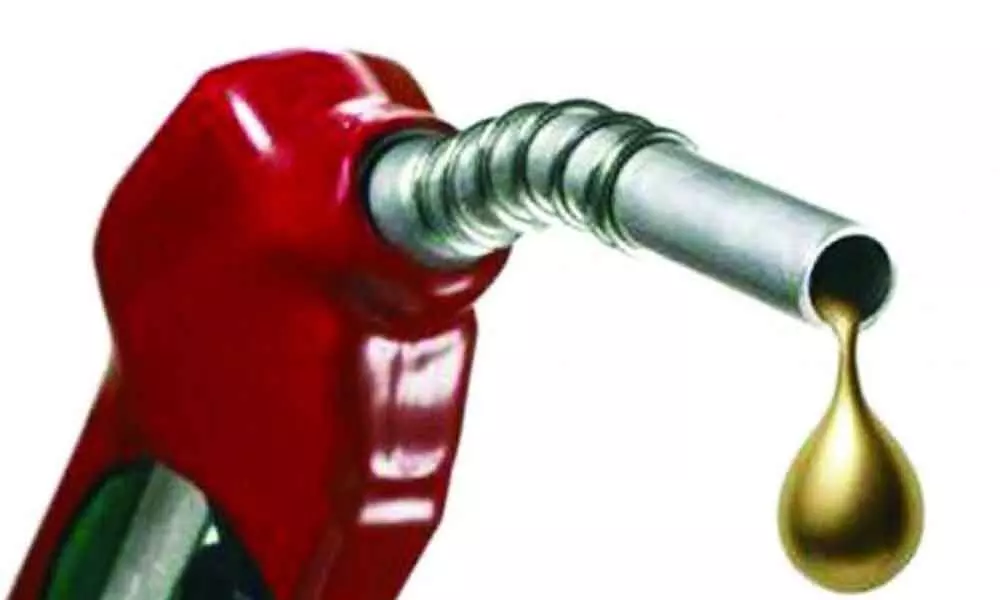Using oil revenue for government consumption?

oil revenue
The price of fuel oil in the international market in 2015 was $111 per barrel. This fell to $23 per barrel in 2020 in the wake of the Covid pandemic. The price of petrol should have declined in tandem.
The price of fuel oil in the international market in 2015 was $111 per barrel. This fell to $23 per barrel in 2020 in the wake of the Covid pandemic. The price of petrol should have declined in tandem. That did not happen, however, because the Union government increased the excise duty on oil in tandem with the decline in the price of oil. As a result, the price of oil in the domestic market remained stable around Rs 70 per litre while the price in international market declined.
Now, in the recent months, the price of oil in the international market has gradually climbed back up to $76 per barrel. It has increased three times in about a year's time. The government, however, did not reduce the excise duty. The result has been that the price of petrol in the domestic market has increased to about Rs 100 per litre from about Rs 70 per litre that had been prevailing for the last many years. The revenue collected by the government increased hugely. It had collected a revenue of Rs 72,000 crore in 2015. This is expected to surpass Rs 3,00,000 crore in the current year.
This increase in the price of oil will lead to an increase in the prices of large numbers of commodities. However, the impact may not be huge. A report by Care Ratings suggests that the price of petrol contributes 1.6 per cent and diesel 3.1 per cent to the wholesale price index. The combined contribution would be less than 5 per cent. An increase of Rs 1 in the price of oil will lead to an increase of only 5 paise in the price rise. Though important, this negative effect is less than the benefits of expensive oil that we shall discuss shortly.
The second alleged negative effect of high price of oil is that it can affect our economic growth. However, the main source of energy in the manufacturing sector is electricity the price of which has been declining for the last many years and is presently less than Rs 4 per unit on the India Energy Exchange. Oil is not used in manufacturing much. Therefore, there is no threat to the manufacturing sector from an increase in the price of oil. Furthermore, the share of manufacturing in our GDP is less at 15 per cent. The share of services is about 54 per cent. The services sector that includes software, education, health and such activities use one-tenth of energy as compared to manufacturing. Thus, the impact of price of oil will not affect our economic growth much. The manufacturing sector does not use oil in manufacturing; the share of manufacturing in GDP is less; and the services sector uses less energy. For these reasons the negative impact of high price of oil on price rise and economic growth will be muted.
There are two benefits of high price of oil. We import about 85 per cent of the oil consumed by us. Our economy will be devastated if we are unable to import oil due to geopolitical or other disturbances. An increase in price of oil will lead to reduction in consumption, less dependence on imports and strengthen our economic sovereignty. Secondly, the burning of oil leads to carbon emissions that are leading to global warming and an increase in natural disasters. An increase in price of oil will lead to less carbon emissions. I reckon the negative impact on price rise and economic growth to be much less than the positive impact on economic sovereignty and environment hence expensive oil is good. The policy of the government to impose high excise duty is in the right direction.
The problem lies in the use or misuse of the huge revenue obtained from this excise duty. The government has claimed that the increased revenue is being used for making capital expenditures and implementing welfare schemes. Facts do not support this claim. The capital expenditures in the present year 2021-22 have indeed been increased by Rs 1,15,000 crore. However, at the same time the receipts from the sale of capital assets have increased by Rs 1,42,000 crore. Therefore, oil revenues are not being used for making the capital expenditures. The second claim is that the revenue obtained from oil is being used for welfare expenditures. This too is doubtful. The outlay on MNREGA has been cut by 34 per cent in the current year. The expenditure on Pradhan Mantri Kisan Yojana has been reduced from Rs 75,000 crore last year to Rs 65,000 crore. The outlay on rural electrification has been reduced from Rs 4,500 crore to Rs 3,500 crore.
The fact is that the revenue is being used to increase government consumption. The expenditures of the government are classified in "capital" and "revenue" heads. Capital expenditures include investments such as in highways while revenue expenditures include salaries paid to the police and such activities. The revenue expenditures of the government increased by Rs 3,00,000 crores in this year. Only recently on July 1, 2021 the government increased the dearness allowance paid to the government employees from 17 to 28 per cent. It is clear that the revenues from oil are being used to enhance government consumption such as paying enhanced salaries to its employees.
Our economy is down. The main reason is that the common man does not have purchasing power. His savings have evaporated in the pandemic. This is seen in the rather flat GST collections around Rs 100,000 crores every month for the last three years. The government must take the following steps in this situation. First, the investment in infrastructure should be reoriented towards rural roads, lighting in the slums and providing free wi-fi in small towns. This will enable the common man to earn incomes, he will be able to buy goods from the market and demand will increase. Second, the government should use revenues from oil to transfer money in the bank accounts of the common man instead of transferring to the bank accounts of its employees. The government would be justified in increasing the excise duty on oil even further if the revenue is used in this way. A selling price of petrol of Rs 150 per litre would be justified as long as the revenue earned is used to make infrastructure for- and transfer money to the common man.
(The author is former professor of Economics at IIM, Bengaluru) Dr Bharat Jhunjhunwala


















